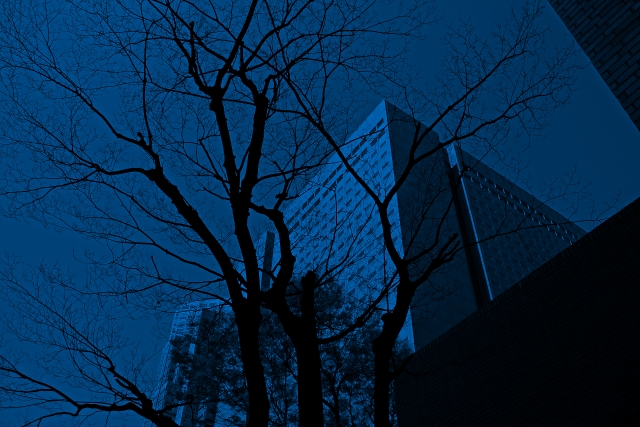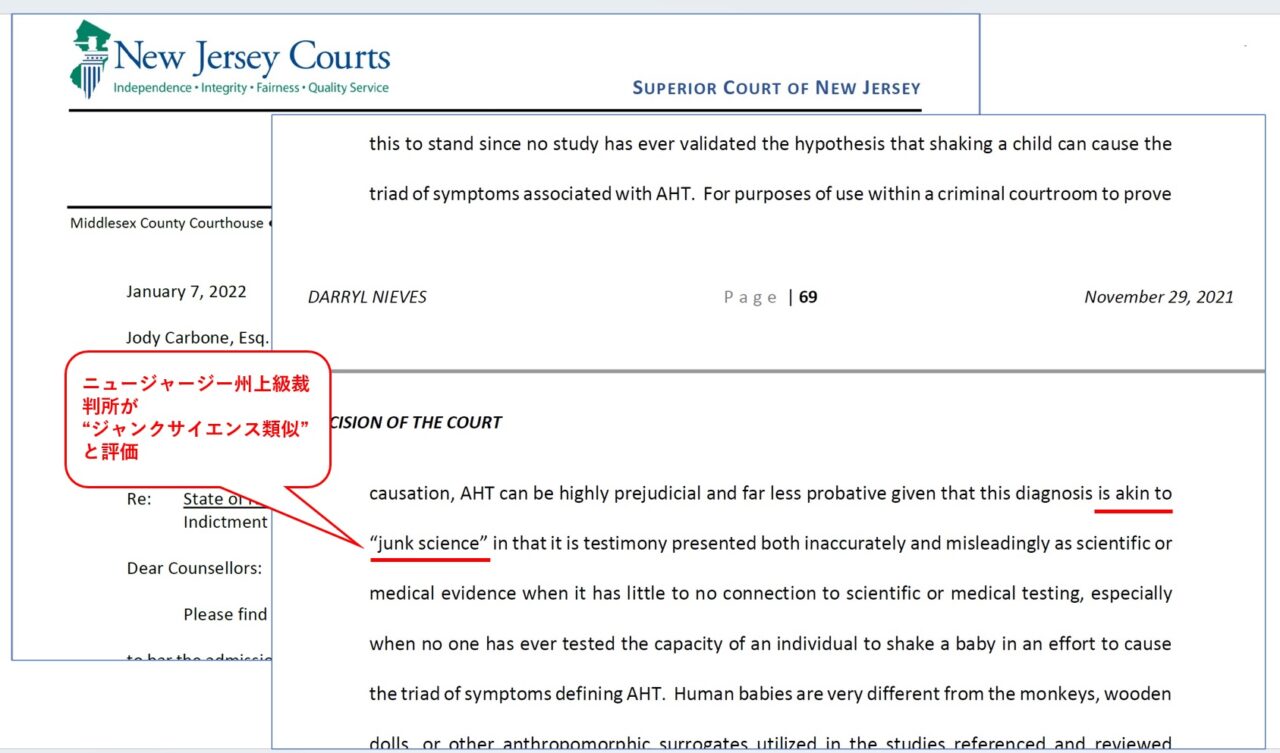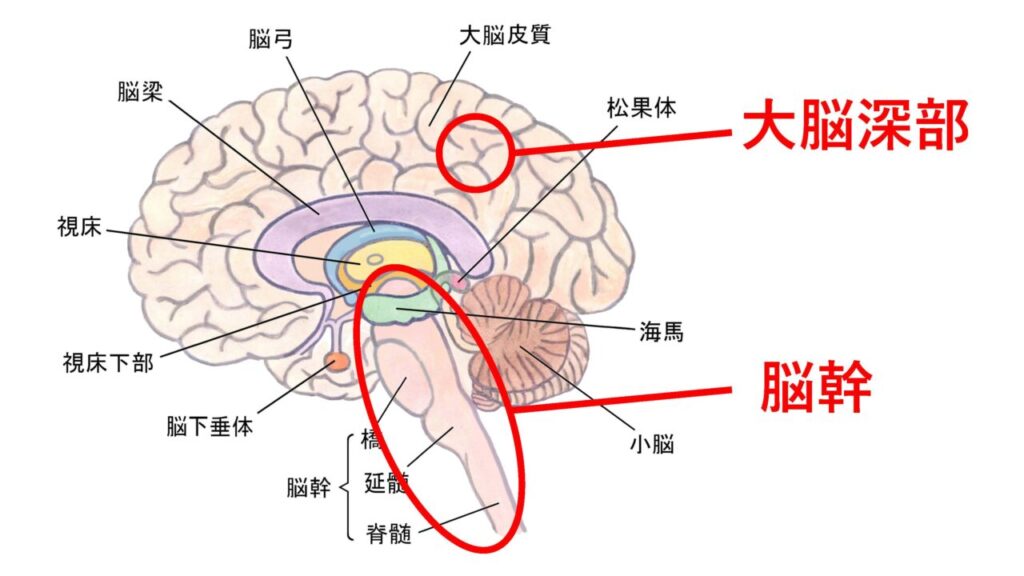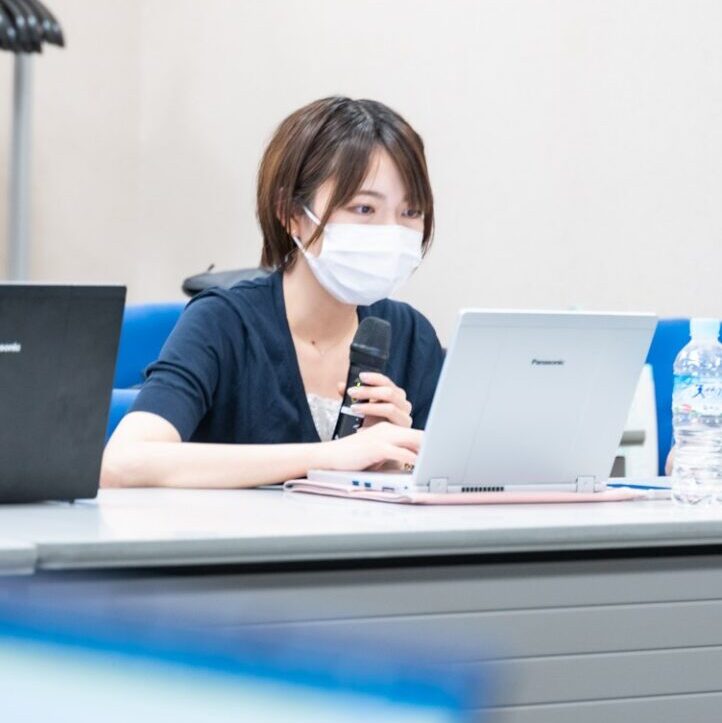
Imanishi Case

Imanishi Case
What was the Imanishi Case?
Modern medical urban legends

In 1971, a British doctor proposed a hypothesis: that cases of intracranial bleeding in infants, absent any external head injuries, might be caused by shaking. The idea was presented in a brief, two-page paper, and the author himself acknowledged it was only a hypothesis.
Nevertheless, the idea quickly gained traction in the United States, where it became linked to the concept of shaking-induced abuse.
When an infant presents with the triad of subdural hematoma, retinal hemorrhage, and cerebral edema, it is said to be caused by a “strong rotational external force” applied to the head. There are no visible external injuries, because the child was “violently shaken” (i.e., abused) in a way that left no outward signs.
This theory became known as Shaken Baby Syndrome (SBS), or more recently, Abusive Head Trauma (AHT), and has since been widely accepted by many medical professionals and child abuse prevention advocates. However, the underlying argument remains a hypothesis.
In recent years, growing skepticism about the SBS/AHT theory has emerged in countries such as the United States, the United Kingdom, Canada, Sweden, Norway, and France. Courts in several of these countries have issued a series of acquittals in cases initially based on suspected SBS.
In 2022, the Superior Court of New Jersey went so far as to characterize the SBS/AHT theory as akin to “junk science.”

However, this urban legend remains widespread in Japan.
The Imanishi case is one example of a false accusation rooted in this belief. In that case, A was found to have bleeding inside her skull.
Yet, there were no external signs of trauma on A’s head that would typically accompany such internal bleeding. Despite this, it was concluded that she must have been subjected to a “strong external force” that somehow left no visible trace. Prosecutors were unable to specify what kind of assault could have caused this. They simply alleged that it was “an assault that caused a strong impact to the head by some means.”
In reality, what happened during this alleged “assault” remains completely unknown. There is no evidence—only a speculative claim with no grounding in fact.
Takahiro Imanishi and A

Imanishi Takahiro and A first met in the fall of 2016.
One day, Imanishi’s then-girlfriend, B, confided in him that she had a child. The three of them decided to meet. At first, A was shy and cautious around Imanishi, but she soon warmed up to him. By the time they parted ways that day, A was sleeping peacefully in his arms.
About a year after that first meeting, Imanishi moved in with B and A. A had trouble falling asleep at night, so Imanishi would take her to the park during the day to help her rest better. Though they shared no biological connection, Imanishi became a father figure to her.
At first, A called him “Taa,” but by the time Imanishi and B got married, she was already calling him “Papa.” After discussing it with B, Imanishi made the decision to formally adopt her.
Even after the wedding, it remained Imanishi’s daily routine to take A to the park. He would head to work early in the morning, and when he came home, he’d bathe her and change her diapers. On nights when she couldn’t sleep, he’d walk with her or lie beside her until she drifted off.
Imanishi, B, and A were a close and loving family. They went shopping together, lit fireworks in the summer, and visited the safari park on Imanishi’s days off.
A’s strange behavior

In the days leading up to the incident, A had not been feeling well. She had been coughing, experienced episodes of vomiting—including once while in the bath—and also had diarrhea. These are common symptoms of infections such as myocarditis. At that point, it was highly likely that A was battling some kind of infection.
On the morning of December 16, 2017, Imanishi left for work early, as he normally did. A appeared more unwell than usual. She took a nap—something she rarely did—and seemed to have a slight fever. She also had no appetite, leaving her pasta untouched at dinner. The warning signs were already there.
That evening after dinner, B stepped out, leaving A alone with Imanishi. A seemed a bit down, so he tried to lift her spirits by holding her and playing their favorite game—rolling around on the futon together. It was a game that always made A laugh. And that evening was no different—A laughed and laughed, just like always.
Then, suddenly, something changed. A faint “uh” sound escaped from her, and then her voice fell silent. Her complexion quickly turned pale, and she stopped breathing. She vomited. Something was clearly very wrong.
In a panic, Imanishi called B and then immediately dialed 119.
“Please come quickly,” he pleaded. “She’s not breathing at all anymore.”
Frantic and terrified, Imanishi tried to perform CPR following the instructions he received from the emergency operator. When the ambulance arrived minutes later, A’s heart had already stopped.
At the hospital, her heart was temporarily revived about 30 minutes after arrival. But tragically, despite continued treatment, A passed away a week later, on December 23, 2017.
Possibility of sudden death

In the days leading up to her sudden decline, A had been coughing and vomiting. On the day her condition worsened, she appeared feverish, showed no interest in her food—leaving her pasta untouched—and seemed unusually listless. These are all common symptoms of an underlying infection.
Myocarditis, for example, often begins with cold-like symptoms and can unexpectedly progress to heart abnormalities. In severe cases, it can lead to sudden death. Infections themselves can also directly cause cardiac arrest. In A’s case, it is believed that an infection triggered her sudden cardiac failure.
In addition, infections can lead to a condition known as a coagulation disorder, in which the body’s ability to form blood clots is impaired, increasing the likelihood of bleeding. After she was admitted to the hospital, medical tests confirmed that A was suffering from a severe coagulation disorder.
But that was not the only factor at play. When the heart stops, two additional conditions can occur: hypoxic encephalopathy and reperfusion injury. The human circulatory system depends on a continuous supply of oxygen. When oxygen flow is interrupted due to cardiac arrest, it causes serious damage—especially to the brain. This oxygen deprivation is known as hypoxic encephalopathy. In this state, the walls of blood vessels—particularly in the brain—become fragile and prone to bleeding.
If the heart is revived later, blood begins flowing again through these weakened vessels. The return of circulation can itself cause further damage—this is called reperfusion injury. Together, hypoxic encephalopathy and reperfusion injury significantly increase the risk of internal bleeding within the skull.
Because A was found to have intracranial bleeding, it was initially suspected that Imanishi had physically assaulted her. However, her bleeding can be medically explained by the combination of a severe infection leading to a coagulation disorder, followed by cardiac arrest, and the subsequent effects of hypoxic encephalopathy and reperfusion injury.
Anatomist’s mistake

“This is a really awful report,” said Dr. Y, a forensic pathologist, after reviewing the autopsy report prepared by the doctor who had examined A before Imanishi’s first trial. He urged the defense team carefully to re-examine the histological slides from the autopsy.
Following Dr. Y’s advice, the defense team rented a microscope, found a pathologist willing to assist, and began their review. What they discovered was shocking.
Traces of myocarditis—an inflammation of the heart muscle—were clearly visible in A’s heart tissue. Yet the autopsy report stated definitively, “No myocardial lesions.” The doctor who conducted the autopsy had entirely overlooked this critical evidence.
Moreover, the same autopsy report claimed that A had suffered a cerebral contusion—a type of brain injury typically caused by external force and often cited as evidence of abuse. However, when the defense reviewed the histological preparations disclosed by the prosecution, there were no signs of any cerebral contusion.
As Dr. Y had stated, the autopsy report was, indeed, “a terrible report.”
Tyranny of investigative agencies

Imanishi was arrested in November 2018 on suspicion of causing death by injury and was released on bail the following month, in December 2018. However, in February 2019, investigative authorities arrested Imanishi again—this time charging him with indecent assault resulting in injury, as well as assault.
Their claim centered on a small wound, approximately 1 centimeter in size, located near A’s anus when she was admitted to the hospital. Based solely on this wound, investigators alleged that Imanishi had inserted a foreign object into A’s anus and charged him accordingly.
But this accusation ignored crucial context. A had extremely sensitive skin and had been regularly seeing a dermatologist since birth. Numerous prescription ointments were found in her home, indicating ongoing treatment. The area around her anus was also known to be delicate and prone to irritation or minor injury.
At the time, A was wearing a cast on her broken left leg and moved around the house by scooting on her bottom. Given her condition, it’s entirely plausible that the small tear resulted from daily activities—such as movement or natural defecation. There was no evidence to suggest the injury was caused by abuse. Notably, there were no internal injuries to the anal canal epithelium—injuries that would be expected if a foreign object had actually been inserted.
During interrogation, an officer reportedly told Imanishi, “We arrested you on the strongest possible basis—based on the wound on A’s bottom—in order to arrest you again and lock you away.”
It appeared that investigative authorities had fabricated a narrative in order to detain Imanishi a second time and paint him as a violent, abusive parent.

The efforts by investigative authorities to portray Imanishi as an abusive parent did not stop there.
When A was brought to the hospital, she had a cast on her left leg. About a month prior to her sudden decline, she had injured herself while playing on a slide at the park with Imanishi. Distracted by the dog Imanishi was walking, A briefly took her eyes off where she was going and sustained a small crack in the bone just below her knee. Despite the nature of the accident, authorities charged Imanishi with assault, claiming that the fracture was caused by physical abuse.
In reality, A’s fracture was minor—so subtle that it was initially overlooked at the hospital. Concerned by her continued pain, Imanishi repeatedly brought A back for further evaluation until the injury was properly diagnosed and treated. This behavior is completely inconsistent with that of someone trying to conceal abuse.
Nonetheless, the investigative authorities grouped together three separate and weakly supported incidents—each occurring at different times—and used them to construct a narrative of ongoing abuse. Their strategy appeared to be to overwhelm the case with multiple charges to create the impression that Imanishi had regularly harmed A.
Regarding the assault charge stemming from the leg fracture, there was no evidence linking Imanishi to intentional harm, and he was acquitted at trial. This outcome was hardly surprising, given the facts.
However, despite the lack of proof, the court’s ruling expressed skepticism toward Imanishi’s account. The investigators’ narrative had taken hold, influencing public perception. Ultimately, Imanishi was found guilty at first instance on the charge of indecent assault resulting in injury—demonstrating the impact of the prosecution’s framing, despite the questionable evidence.
Doctor witness error

Imanishi was arrested in November 2018 on suspicion of causing death by injury and was released on bail in December of the same year.
During the trial, a neurosurgeon testifying for the prosecution claimed that a CT scan showed minute bleeding in the brain and that violent shaking had caused extensive damage to A’s cranial nerves—a condition known as diffuse axonal injury (DAI).
However, it is widely recognized within the medical community that CT scans are incapable of detecting such microscopic bleeding or severed cranial nerves. Diagnosing diffuse axonal injury typically requires an MRI, and even then, it can be difficult to confirm definitively.
The prosecution’s medical expert also asserted that the shaking had exerted external forces on A’s brain equivalent to those experienced in a high-impact traffic accident. But this claim defies physical plausibility. A, at just 2 years and 4 months old, could not have been subjected to such violent shaking by human hands alone.
For symptoms like A’s to occur due to trauma within the skull, the external force would need to reach the brainstem—the very center of the brain. Achieving that level of internal damage would require a degree of force far beyond what is physically possible through shaking.
Moreover, there were no signs of external trauma on the surface of A’s brain. The absence of visible injuries further undermines the prosecution’s theory that severe external force was involved.

脳弓=fornix
脳梁=corpus callosum
視床=thalamus
視床下部=hypothalamus
脳下垂体=pituitary gland
脳幹=brain stem (橋=pons、延髄=medulla oblongata、脊髄=spinal cord)
小脳=cerebellum
海馬=hippocampus
松果体=pineal gland
大脳皮質=cerebral cortex
大脳深部=deep cerebral veins
______________________________________________________________________
It is highly unusual for damage to occur only in the center of the brain without any injury to the surface—much like how a goldfish would not die from a hitting a fishbowl unless the bowl itself were also damaged.

In fact, the doctor had misread the English-language medical paper he relied on. The paper made no mention of shaking whatsoever. However, the doctor misunderstood its content and wrongly concluded that shaking could generate external forces comparable to those seen in traffic accidents. When the defense pointed this out during trial, the doctor was forced to admit that he had misinterpreted the study.
Despite this, the court of first instance accepted the doctor’s testimony as credible and found Imanishi guilty.
Court prejudice

The image of “Imanishi = abusive parent” was constructed through the overreach and bias of the investigative authorities. This narrative—fueled by speculation rather than evidence—ultimately shaped the court’s perspective, leading even the judges to view Imanishi through a lens of prejudice.
During the first instance trial, the presiding judge posed the following question to Imanishi, referencing the charges of assault, indecent assault resulting in injury, and assault resulting in death, brought by the prosecution:
“I believe these incidents occurred one after the other over the course of about a month. What are your thoughts on the fact that so many different things like this happened to A over the course of a month?”
This question is inherently flawed. It assumes as fact that Imanishi was responsible for all three incidents—despite the very purpose of the trial being to determine whether he was responsible in the first place.
In fact, Imanishi was acquitted of the assault charge. Therefore, it is inaccurate to claim that these events occurred “one after another” as if they formed a pattern of abuse. Moreover, invoking the theory of probability in this context is a legal misstep. Guilt cannot be determined by statistical likelihood or inference—it must be proven through concrete evidence, beyond a reasonable doubt.
Since the outset of the proceedings, Imanishi has consistently maintained his innocence. It is unreasonable—and legally unsound—to expect him to answer a question premised on the assumption that he committed acts he has always denied, and for which the evidence is insufficient.
And yet, this question was posed. It illustrates how deeply the prosecution’s narrative had taken root, and how the court, whether consciously or not, adopted the image of Imanishi as an abusive parent—just as the investigative authorities had intended.
Misjudgment

The first instance judgment acquitted Imanishi of the assault charge but accepted the prosecution’s witness testimony as credible, ultimately finding him guilty of assault resulting in death and indecent assault resulting in injury.
The reasons given for accepting the prosecution witnesses’ credibility were as follows:
- “Their opinions are based on advanced forensic medical knowledge.”
- “They possess extensive clinical experience.”
- “They have considered the cause of the victim’s death from a neutral standpoint, based on their respective expertise, and there is nothing unreasonable about the content.”
However, the same could—and should—be said of the defense witnesses. The defense doctors uniformly testified that A’s symptoms could not be definitively attributed to abuse and clearly stated that her death may have been due to sudden cardiac arrest. These experts also relied on advanced medical knowledge and extensive clinical experience, and similarly offered their conclusions from a neutral, professional standpoint.
There is no justifiable basis to credit the prosecution’s experts while disregarding the defense’s, especially when the latter’s views were grounded in both clinical practice and scientific reasoning. The original judgment’s reasoning on this point is not evidence-based—it is biased.
More fundamentally, the burden of proof lies with the prosecution. It must first be established—beyond a reasonable doubt—that A’s intracranial bleeding was caused by external force. Yet the original judgment dismissed the defense’s testimony and concluded, without sufficient basis, that the prosecution had met its burden.
The same flawed reasoning appears in the court’s handling of the indecent assault resulting in injury charge. The prosecution’s medical expert claimed that a roughly 1 cm wound near A’s anus was caused by the insertion of a foreign object. In contrast, the defense expert testified that such a wound could easily result from natural defecation and that he had seen similar cases regularly in his medical practice.
The judgment, however, offered this rationale: “Common sense tells us that it is inconceivable for defecation to cause a tear of 70–80% of the perineum.”
But in reality, the wound was only about 1 cm—far from the exaggerated 70–80% claim. And if “common sense” is being invoked, then expert medical testimony becomes all the more essential to clarify what is truly plausible in clinical terms. The court failed to explain why the defense expert’s testimony supposedly defied common sense, nor did it define what dimensions fall within or outside that standard. This vague and unsupported reliance on “common sense” undermines the court’s credibility.
There are numerous errors in the original judgment—too many to count. What is clear, however, is that a guilty verdict should never have been rendered without indisputable proof that Imanishi committed each of the alleged crimes. The first instance ruling, which lacked even this basic principle of criminal justice, constitutes a deeply flawed and erroneous judgment.
The case goes on appeal

Unfortunately, in the first trial, Imanishi was found guilty of both injury resulting in death and indecent assault resulting in injury. Although he was acquitted of the assault charge, both parties appealed the verdict. Imanishi continues to fight to prove his innocence, while the prosecution has appealed the not-guilty verdict on the assault charge, continuing to assert his culpability.
During the appeal, the defense submitted new written opinions from several expert doctors to contest the charges of injury resulting in death and indecent assault resulting in injury. For the injury resulting in death charge, the defense presented opinions from a pathologist, a radiologist, and an emergency physician. The pathologist—an expert in determining causes of death at the cellular level—examined the tissue samples from A’s autopsy and confirmed that there was no damage to the brainstem, directly contradicting the prosecution’s claims of external trauma. This indicated that there were no traces of violent external force.
The radiologist, specializing in diagnostic imaging, reviewed A’s CT scans using objective CT values that eliminate the influence of subjective interpretation. His analysis found no evidence of contusive multiple hematomas. This further undermined the prosecution’s theory that head trauma caused A’s condition. Additionally, the emergency physician stated that when head trauma causes cardiac arrest (asystole), it typically takes more than an hour for the arrest to occur. In A’s case, however, her heart stopped approximately six minutes after her condition suddenly worsened. This significant discrepancy strongly suggests that her cardiac arrest was not caused by violence to the head. Together, these expert opinions support the defense’s longstanding claim that A’s sudden collapse was not due to abuse but more likely the result of an infection—particularly in the heart, such as myocarditis.
For the indecent assault resulting in injury charge, the defense submitted new opinions from two proctologists, including one who is also a dermatologist. These specialists examined the medical findings and concluded that there was no injury to the anal canal epithelium, which would have been present if a foreign object had been inserted. They further noted that the small, 1 cm wound near A’s anus could have been caused by natural defecation or friction from normal movement—especially since A had a cast on her leg and was known to scoot on the floor using her bottom. They also emphasized that A had very sensitive skin, as evidenced by her history of frequent visits to a dermatologist and the many prescription ointments found at home. These opinions clearly indicate that the wound was not the result of assault.
As the case progressed to the appellate stage, public support for Imanishi began to grow. He received backing from Innocence Project Japan, an organization dedicated to supporting wrongfully convicted individuals. He also reached out to the National Rescue Association, an advocacy group made up of families who, like Imanishi, were falsely accused of abuse due to the now-contested SBS (Shaken Baby Syndrome) hypothesis. In response, the “Group for Acquittal of Imanishi Takahiro” was formed, led by members of the National Rescue Association and others affected by similar cases. Since then, numerous support meetings and study sessions have been organized, drawing attention to the flaws in the case. Many attendees have expressed their belief in Imanishi’s innocence, stating clearly, “We believe he is innocent.”
Osaka High Court Acquits Mr. Imanishi
On 28 November 2024, the Osaka High Court acquitted Mr. Imanishi of all charges; injury resulting in death, indecent assault resulting in injury, and assault.

On the injury resulting in death charge
There were no traces of trauma on the external surface of A’s head. The expert for the prosecution, who appeared as a witness at the first instance, claimed that Mr. Imanishi had caused an injury deep inside the skull without leaving any trace on the external surface, by ‘throwing A on the futon’. He also said that the external force inflicted on A was equivalent to that of a traffic accident.
On this point, the High Court held as follows.
‘It is highly doubtful, in the light of sound common sense, whether an external force comparable to a traffic accident could be applied to the two-years-and-four-months old victim, even on a futon, without leaving injury to the external surface of her body, including her head.’
There is no way that an external force could be inflicted to the inside of the head without leaving traces on the surface. The Court of Appeal made a ruling which is very reasonable under common sense.
Regarding the original judgment, which affirmed the credibility of the prosecution doctor’s testimony on the grounds that it was ‘very clear and convincing’, the High Court pointed out that ‘the credibility of the testimony must be examined from the perspective of scientific reasonableness, not from the impression of the witness’ explanation’.Furthermore, the High Court stated that ‘there is room for doubt in the way the head CT images were read by the prosecution’s witness.’ The court questioned the medical basis for the intracranial injuries claimed by the prosecution witnesses.
On the indecent assault resulting in injury charge
The High Court ruled that the 1cm wound around A’s anus could have been caused by rough and dry skin.
The District Court had found that the wound could not have been caused by spontaneous defecation, and decided that there was an insertion of a foreign object, stating that ‘even if the victim had diarrhea, and even if factors such as dry skin were added, common sense could not consider that the laceration in question could have been caused by defecation’. The High Court reversed, stating that ‘the meaning of “common sense” as a reason why defecation and skin abnormalities cannot be linked to the occurrence of this laceration is unclear’.
On the Injury charge
It cannot be medically inferred that the cause of A’s fracture was caused by Mr. Imanishi’s assault.
The High Court upheld the acquittal by the District Court, pointing out that there were no circumstances that suggested that Mr. Imanishi had abused A and that there were no circumstances indicating his violent tendencies.
Mr. Imanishi was acquitted on all three charges.
The High Court’s judgment was one that was rendered in due course. The acquittal of Mr. Imanishi came too late.
Imanishi case is still pending in the Supreme Court
However, the prosecutors appealed the Osaka Hight Court’s decision to the Supreme Court and still maintaining Mr. Imanishi’s guilt.
The Imanishi case is a false accusation case which should never have been charged in the first place. An innocent man was wrongly convicted of crimes he had nothing to do with and sentenced to 12 years in prison with labor. Mr. Imanishi was wrongly convicted in the Osaka District Court and detained for five and a half years at the Detention Center.
Prosecutors should take the High Court’s decision seriously and do their best to prevent false accusations from happening. Prosecutors never admit their own mistakes and insist on convicting people once they prosecute. This attitude must be reviewed and corrected.We ask for your continued support to ensure that the appeal is promptly dismissed.
Takahiro Imanishi from the perspective of his lawyer

In any case, he is a remarkably strong-minded person. I believe that Imanishi Takahiro is facing an incredibly painful situation—being accused of abusing A, a child he loved as his own—for a crime he did not commit. And yet, even now, he remains undeterred. He continues to fight, holding on to the belief that he will one day be fully exonerated.
I visit him regularly to offer encouragement and to share updates on the progress of the trial. But more often than not, I leave those visits feeling encouraged myself. Witnessing his unwavering trust in the legal team and his quiet strength in the face of injustice fills me with renewed determination to clear his name and prove his innocence.
Imanishi is also an incredibly kind person—someone who consistently puts others before himself. Since the appeal began, a growing number of people have come forward to support him. And every time I see him, he expresses deep gratitude—not only to the legal team but also to every single supporter. He always asks after our health and well-being, no matter how difficult his own situation is.
I truly believe that Imanishi’s character is one of the biggest reasons why so many people have rallied around him. He is not the kind of person who could ever harm a child—let alone one he loved as his own.
(Attorney Ayaka Yuasa, member of Imanishi’s legal team)
イベント等での訴え、入会の呼びかけ、裁判所に公平・公正な審理・判決を求める署名を募っています。
ご入会を希望の方やご関心のある方は、こちらのページをご覧ください。





